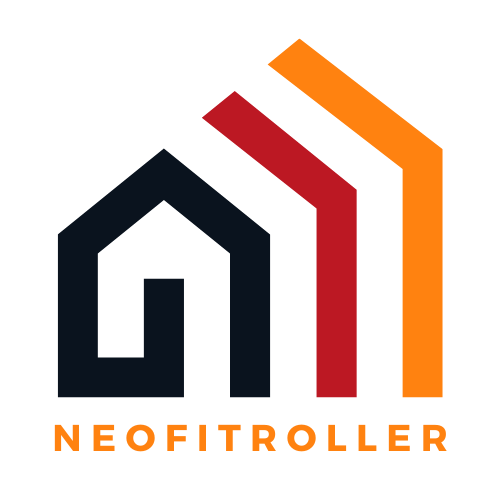Table of Contents
ToggleManaging difficult tenants can feel like juggling flaming swords while riding a unicycle. One moment everything seems fine, and the next, you’re faced with noise complaints, late rent, or even a pet iguana that’s taken over the living room. It’s a challenge that every landlord dreads but also one that can be tackled with the right strategies.
Navigating these tricky situations doesn’t have to be a nightmare. With a mix of humor, patience, and effective communication, even the most challenging tenants can become manageable. After all, a little laughter can go a long way in diffusing tension. So buckle up as we explore practical tips and tricks to turn those tenant troubles into manageable moments, ensuring a smoother ride for everyone involved.
Understanding Difficult Tenants
Difficult tenants present unique challenges for landlords. Identifying their behaviors and issues is essential for effective management.
Common Types of Difficult Tenants
Tenants may display various challenging behaviors. Noise complaint tenants frequently disturb neighbors, causing frustration. Rent default tenants delay payments, disrupting landlord cash flow. Property damage tenants may neglect maintenance or intentionally damage the unit. Disrespectful tenants engage in inappropriate interactions with neighbors or staff. Understanding these types helps landlords prepare and address issues promptly.
Signs of a Problematic Tenant
Recognizing problematic tenants can prevent further complications. Consistent late rent payments indicate financial issues or disregard for agreements. Frequent complaints from neighbors might signal disruptive behavior. Regular neglect of property upkeep shows a lack of responsibility. Unresponsiveness to communication raises red flags about their willingness to cooperate. Identifying these signs early allows for timely intervention and resolution.
Strategies for Managing Difficult Tenants

Effective management of difficult tenants hinges on specific strategies. Implementing communication techniques and setting clear expectations can significantly enhance the landlord-tenant relationship.
Communication Techniques
Employ open lines of communication. Regular check-ins foster trust and transparency. Respond promptly to tenant inquiries to demonstrate attentiveness. Additionally, maintain a friendly tone during conversations, as this helps de-escalate tense situations. Use written documents, such as emails or texts, to document discussions, which can clarify agreements. Encourage tenants to share their concerns, allowing for collaborative problem-solving. Active listening shows tenants that their opinions matter. Regular updates about property issues build goodwill, ensuring tenants feel informed and valued.
Setting Clear Expectations
Establishing clear expectations alleviates misunderstandings. Provide a comprehensive lease agreement that details rules, payment deadlines, and maintenance responsibilities. Regularly review these guidelines to reinforce tenants’ understanding. Consider creating a welcome packet that outlines important policies, emphasizing community standards. Set timelines for responses to inquiries and routine maintenance requests. Moreover, ensure tenants understand consequences for rule violations. Use reminders for rent payments and property upkeep. By presenting expectations transparently, landlords can reduce conflict and promote a harmonious living environment.
Legal Considerations
Understanding legal considerations is vital for managing difficult tenants. Landlords must navigate tenant rights and responsibilities carefully to maintain a lawful rental environment.
Tenant Rights and Responsibilities
Tenants possess specific rights, including safe living conditions and the right to privacy. They also share responsibilities like timely rent payments and property maintenance. Understanding these rights helps landlords avoid disputes. Clear lease agreements outline expectations, reducing confusion. Remaining compliant with state and local laws protects both parties. Additionally, landlords should familiarize themselves with anti-discrimination laws. Knowledge empowers landlords to handle tenant issues effectively and legally.
When to Seek Legal Action
Seeking legal action should occur only after exhausting all other options. Documenting all tenant interactions forms a crucial foundation. Patterns of consistent late payments or property damage signal a breach of the lease. Landlords often need to send formal notices for violations before pursuing legal avenues. Considering eviction may become necessary for repeated lease breaches. Consultation with a real estate attorney provides clarity on the legal process. Understanding local eviction laws ensures compliance and aids in effective action. Awareness of the implications of taking legal action helps landlords safeguard their interests.
Case Studies
Case studies illustrate real-world scenarios that landlords encounter while managing difficult tenants. They offer valuable insights into effective strategies and the importance of communication.
Successful Management Examples
One example involved a landlord dealing with a tenant consistently late on rent. The landlord initiated a friendly conversation that eased tensions. Open dialogue led her to understand underlying financial challenges. Together, they created a modified payment plan accommodating the tenant’s cash flow. As a result, the tenant paid timely, fostering a more positive landlord-tenant relationship. This experience highlighted the impact of proactive communication in resolving conflicts.
Lessons Learned from Challenging Situations
A landlord faced a tenant who frequently disturbed neighbors with loud parties. Initial warning letters had limited success. After seeking feedback from the tenant, it became apparent they felt isolated in the community. By hosting a tenant gathering, the landlord built rapport among tenants. This approach encouraged the troublesome tenant to be more considerate of neighbors. Key takeaways included the significance of community engagement and understanding tenant perspectives. Prioritizing relationship-building can often lead to smoother resolutions in challenging situations.
Managing difficult tenants can be a challenging aspect of being a landlord. By employing effective communication strategies and setting clear expectations, landlords can foster better relationships and reduce conflicts. Recognizing the signs of problematic behavior early allows for timely interventions that can lead to positive outcomes.
Legal considerations also play a crucial role in this process. Understanding tenant rights and responsibilities helps maintain a lawful environment while protecting landlords from potential disputes. With the right approach and tools, it’s possible to transform challenging situations into opportunities for growth and improved tenant relations.








